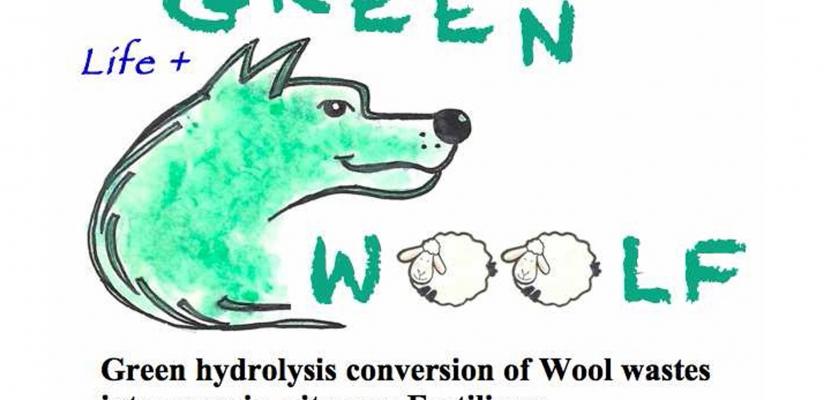Image

Life+ GreenWoolF project
Published on 26 February 2018

Italy
Piemonte
This is the good practice's implementation level. It can be national, regional or local.
About this good practice
Coarse wool from EU sheep farming and butchery industry is a by-product which is unserviceable for textile application. Annual shearing, necessary for the well being of the animals, produces 1.5–3 kg head of coarse wool (that is more than 200 thousand tons in EU). The remaining poor quality wool produces large volumes of waste which represent an environmental problem. To burn it as fuel is inefficient due to its self-extinguishing and co-firing character and it is highly polluting because of its high sulfur content. Moreover, since the EU Regulation allows sheep farmers to carry out the scouring process themselves, the pollutant effluents from wool scouring cannot be easily controlled resulting in an additional environmental problem.
The GreenWoolF project, financed under the EU Life+ programme, aims to demonstrate the viability of converting waste wool into amendment fertilisers using small-scale, local hydrolysis plants, thus reducing transportation costs of both fertilisers and wool wastes, and eliminating scouring and disposal of coarse wools.
Unserviceable grease wool can be converted into a useful soil conditioner fertiliser, with a demonstration unit able to manage 1/3 of Piedmont’s annual wool clip (1 ton/day).
The project involved two research centres and a manufacturing company, though the final beneficiaries will be local and European sheep farmers, as well as companies producing organic fertilizers and soil and plant amendments.
The GreenWoolF project, financed under the EU Life+ programme, aims to demonstrate the viability of converting waste wool into amendment fertilisers using small-scale, local hydrolysis plants, thus reducing transportation costs of both fertilisers and wool wastes, and eliminating scouring and disposal of coarse wools.
Unserviceable grease wool can be converted into a useful soil conditioner fertiliser, with a demonstration unit able to manage 1/3 of Piedmont’s annual wool clip (1 ton/day).
The project involved two research centres and a manufacturing company, though the final beneficiaries will be local and European sheep farmers, as well as companies producing organic fertilizers and soil and plant amendments.
Resources needed
The project was founded by the EU Life+ programme. The total budget of the project was € 1,995,265.00 and received an EU contribution of € 997,632.00.
Evidence of success
The project has achieved two main results. First, it demonstrates that wool waste could be 100% recycled into organic fertiliser using a “green hydrolysis process” with no use of dangerous chemicals. Second, it promotes the development of an economically-sustainable management model that takes into account the sheep population and density distribution in the Piedmont region by optimising the plant size and the added value of the fertiliser produced.
Potential for learning or transfer
The model developed by Piedmont can be proposed to other EU regions where sheep breeding and the related production of coarse wools represents an economic and environmental problem. Organic fertilisers and industrial machinery for the production were obtained. The innovative process of GreenWoolF can reduce transportation costs and eliminate the need of scouring and discarding coarse wool which can lead to important benefits for other EU regions, thus increasing employment and profit from sheep farming.
Further information
Website
Good practice owner
You can contact the good practice owner below for more detailed information.
Organisation
CNR-ISMAC, National Research Council – Institute for Macromolecular Studies

Italy
Piemonte
Contact
PhD Candidate
